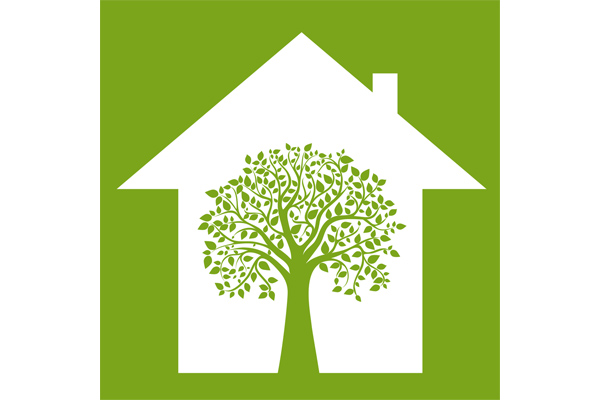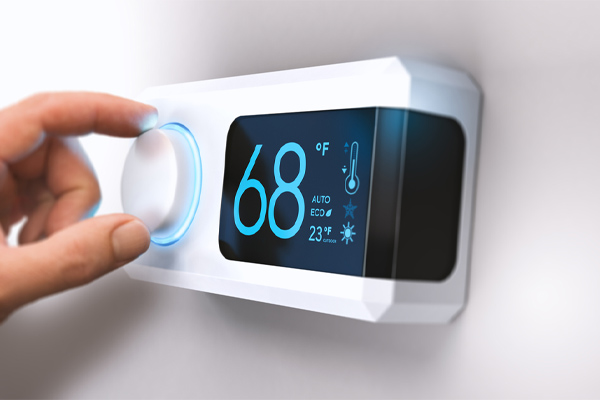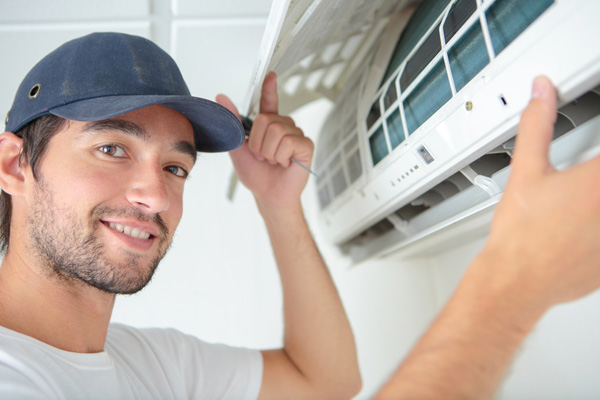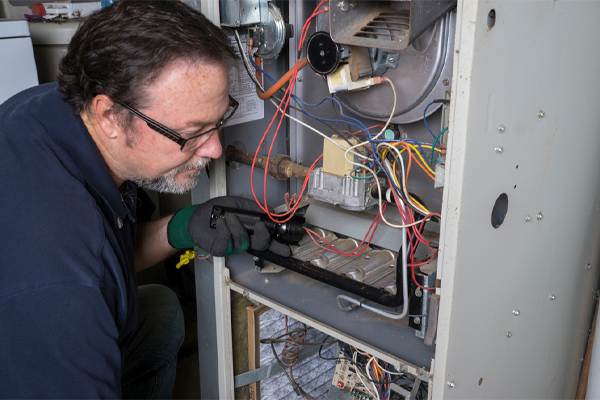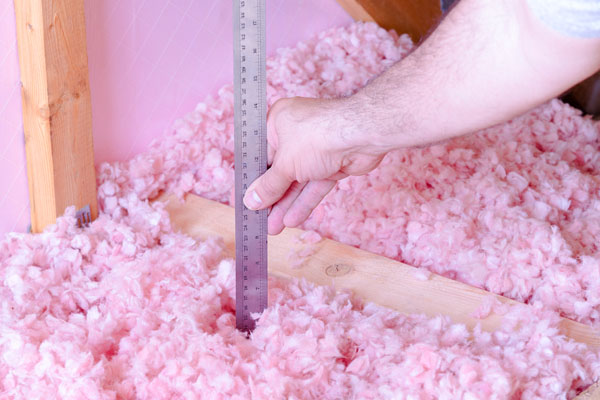Going Green With Your HVAC System
According to the U.S. EIA (U.S. Energy Information Administration), the average household in the country uses around 50% of electricity for heating and cooling. Additionally, power costs have continued to rise over the last 10 years and are still expected to rise in the coming years. In a report by Statista, electricity costs have indeed been increasing and there is no sign that it would plateau or decrease. To avoid the financial costs, it is important that you learn to decrease your energy use and help the environment along the way. How? By making sure that your heating and cooling system is in good condition and energy-efficient. Here’s how to have eco-friendly heating and cooling in your home.
Can You Go Green With Your HVAC System?
Contents
- 1 Can You Go Green With Your HVAC System?
- 1.1 Replace An Old HVAC System
- 1.2 Consider Installing A Programmable Thermostat
- 1.3 Take Advantage Of Natural Light.
- 1.4 Proper Installation Of The HVAC System Is Key
- 1.5 Make Use Of HVAC Zoning
- 1.6 Schedule Yearly HVAC Maintenance Appointments
- 1.7 Get Your HVAC Ducts Inspected
- 1.8 Make Sure Your Insulation Is Optimal
- 1.9 Use Landscaping To Go Green
- 1.10 Conclusion
- 2 Call Townsend Energy For Superior HVAC Solutions
There are actually several ways for you to go green using your HVAC system. In this article, we share 9 of them:
Replace An Old HVAC System
Age affects the way an HVAC system works. Over time, it will begin to lose efficiency and wear down, sometimes breaking down more often. With reduced efficiency also comes increased energy consumption. An 18-year-old HVAC system, for example, will still work but it will no longer be as good as a newer unit. By upgrading your system to a high-efficiency unit, you will be able to save more energy and reduce your electrical costs. New HVAC systems are designed to be efficient compared to older models because of better technology.
However, not all HVAC equipment is created equal. You will notice this on their Seasonal Energy Efficiency Ratio (SEER) and Annual Fuel Utilization Efficiency (AFUE) ratings. Higher ratings indicate better HVAC energy efficiency, which gives you a good idea of which brand or model is the best choice for you. When you are ready to upgrade, take a look at the SEER and the AFUE rating of the system.
Consider Installing A Programmable Thermostat
Another easy way to go green is to have a programmable thermostat installed. Smart thermostats help increase the energy efficiency of the HVAC system by helping match indoor temperature settings with your daily habits. Using a programmable thermostat, the HVAC system will only run when needed, which means it will not consume energy as much. Keep in mind that thermostats that offer the most basic programmable settings are still more efficient compared to manual thermostats.
Programmable thermostats can be set at a certain temperature when there is no one’s home and at a more comfortable temperature when you are at home. The changes in the temperature can result in significant energy savings, which means that programmable HVAC systems offer a green or eco-friendly option.
Take Advantage Of Natural Light.
A home with west- or south-facing windows can benefit from the natural heat and light that the sun offers, especially at noon and in the early afternoons. This is particularly beneficial during winter. It does, however, pose a problem during summer. Keep in mind, though, that the sun is a free source of warmth. Why not take advantage of the sun by using natural lighting and heating during winter and keeping your home cool by installing heavy curtains, blinds, or shades?
Proper Installation Of The HVAC System Is Key
Efficient HVAC systems are actually greener but if the system is not installed properly or if certain components are incorrectly placed, it will still show efficiency issues. Let’s take the refrigerant used in the HVAC system as an example. It should be measured precisely so that it allows the system to function well and is not over- or under-pressurized. If less than the correct refrigerant amount is present, your AC system will not be as efficient in reducing heat and humidity indoors, which means you will have to keep it running for longer. Once the refrigerant level is right, all the other elements in the system will become well-calibrated so your HVAC will work properly. This is why you always need to work with an experienced and reputable HVAC contractor to have your HVAC unit installed.
Make Use Of HVAC Zoning
One of the best ways to keep your HVAC system green is to use zoning. HVAC zoning lets you take advantage of closed-circuit systems for heating and cooling different spaces or zones in your home. With zoning, you can customize the temperatures in the rooms independently. This means that if you are not using the upstairs area for a long period of time, you can turn off the heating and cooling in that area alone without affecting the temperature downstairs. You can adjust the temperatures in rooms that receive more light and heat from the sun so the spaces are always in a comfortable condition.
HVAC zonings are very useful for multi-level homes and large buildings. Besides, ductless HVAC systems are rising in popularity as more homes are using them. If zoning seems like a good option for you, talk to your HVAC contractor about its benefits.
Schedule Yearly HVAC Maintenance Appointments
Make sure to schedule an annual inspection of your HVAC system with a licensed contractor. Regular maintenance will help reduce the likelihood of costly repairs and keep your HVAC system highly efficient. A reputable HVAC contractor can inspect, perform tune-ups and repairs, and clean your HVAC system so it is always in good condition.
Get Your HVAC Ducts Inspected
Leaks in your ductwork can also cause your HVAC system to consume more energy just to maintain the desired temperature. Leaks allow air to escape and outdoor air to enter, which affects the temperature indoors. Your HVAC system will then have to work harder just to keep your home comfortable. A ductwork inspection by a professional will help rectify this problem.
Make Sure Your Insulation Is Optimal
Insulation has a huge impact on the efficiency of your HVAC system. If you are unsure about the condition of your home’s insulation, ask an HVAC expert to perform an audit so any problem spots can be identified. In many cases, simple caulking and weatherstripping will help fix these problem areas. Keep in mind that hot/cool air that escapes from cracks and gaps due to ineffective insulation accounts for at least 30% of the energy consumption in many homes.
Use Landscaping To Go Green
Trees next to your home can potentially decrease indoor temperatures in the hot months. Use these natural shades (including shrubs, hedges, and tall plants) to your advantage and keep your home cool. This gives you the opportunity not to rely on your AC system too much. You cut down on your cooling costs and conserve energy at the same time.
Conclusion
There are many reasons why Americans want to go green. Some people may want to do so to meet regulations, while others want to save energy and money. Others simply want to reduce their carbon footprint. Regardless of your reasons for wanting to go green, installing a high-efficiency HVAC system offers a number of excellent advantages for you that will certainly pay off over the long term.
Call Townsend Energy For Superior HVAC Solutions
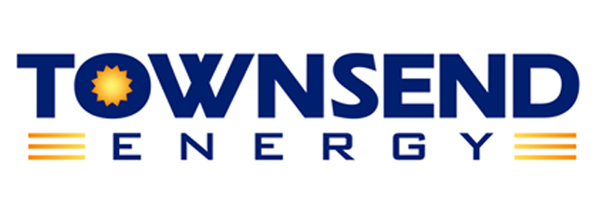
Contact us now at (800) 722-4101 to find out more!

